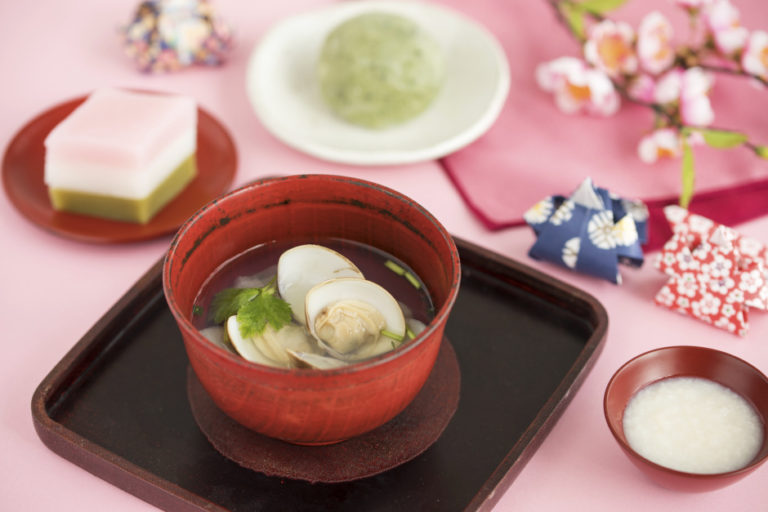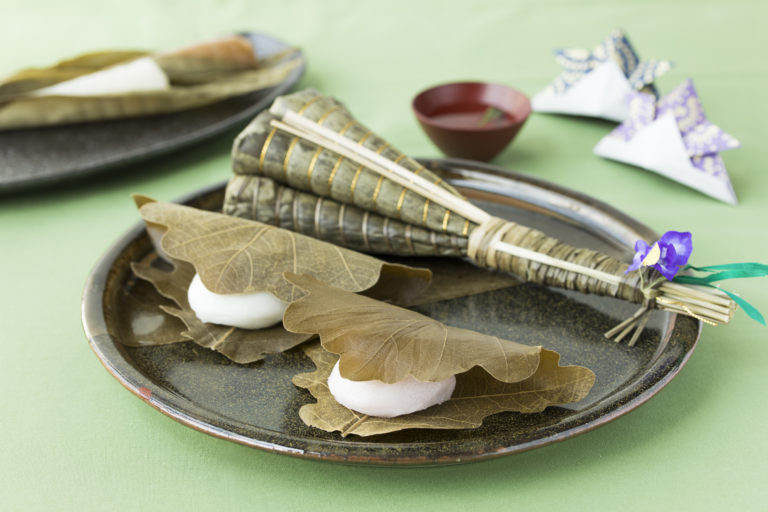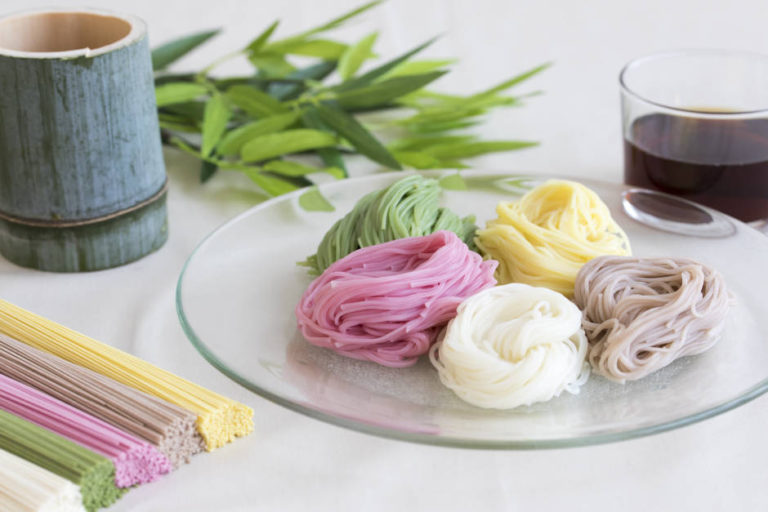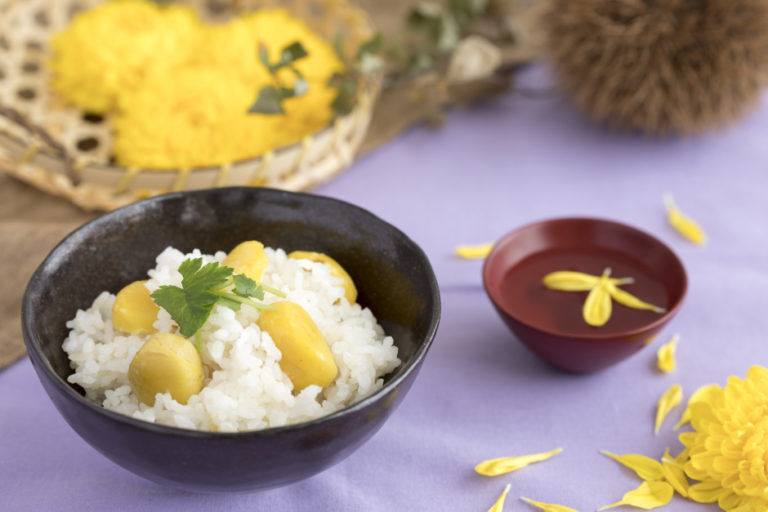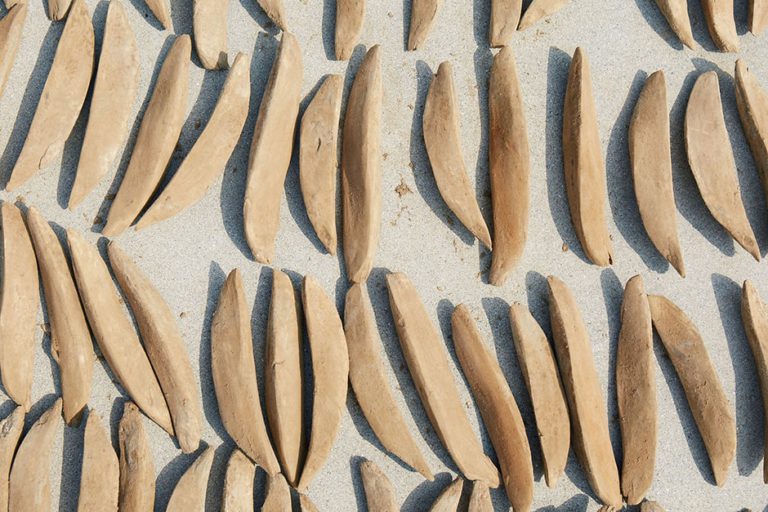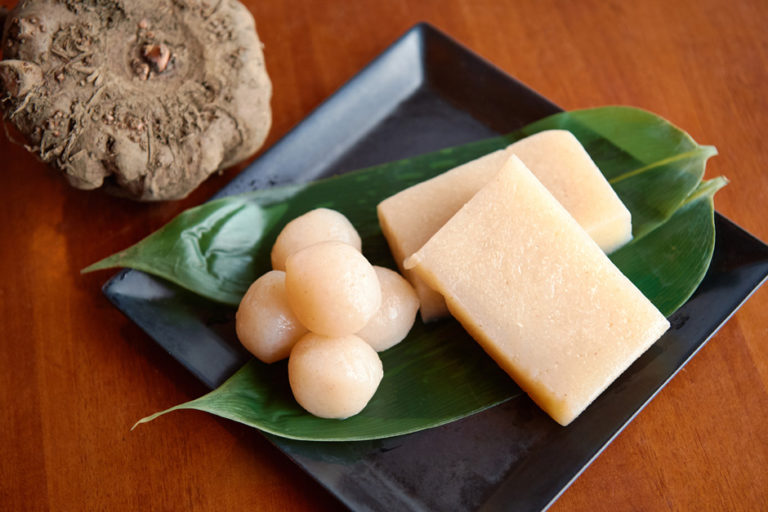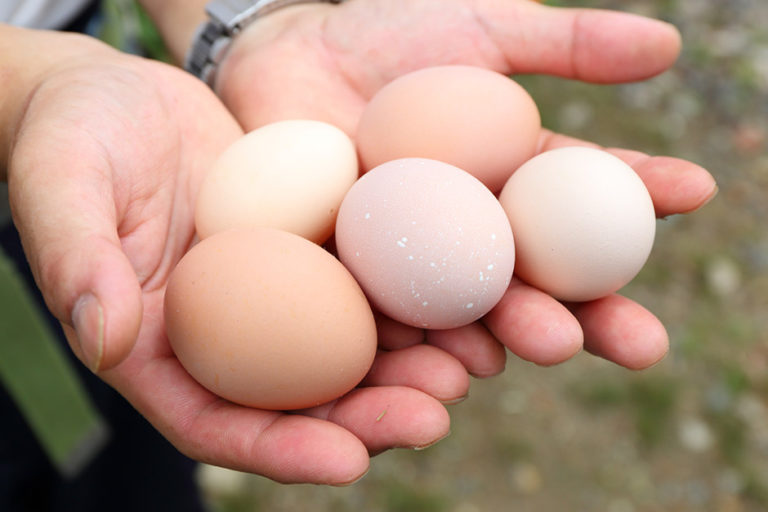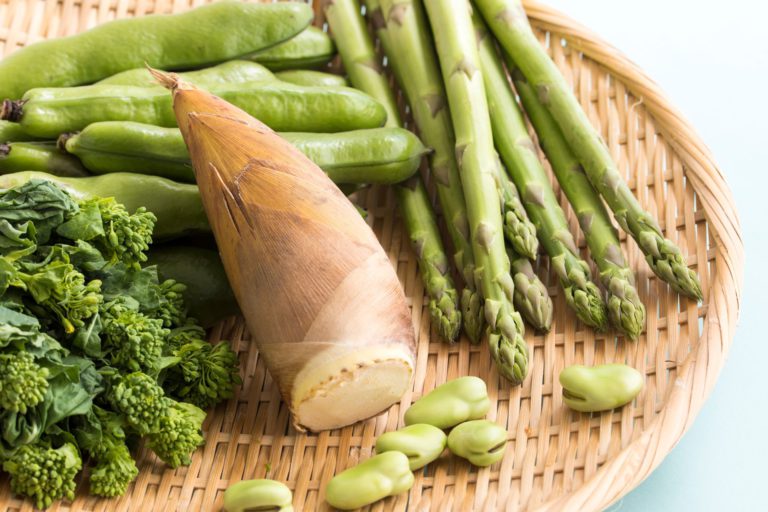Enjoying Go-sekku (Five Seasonal Festivals): January 7, Jinjitsu no Sekku
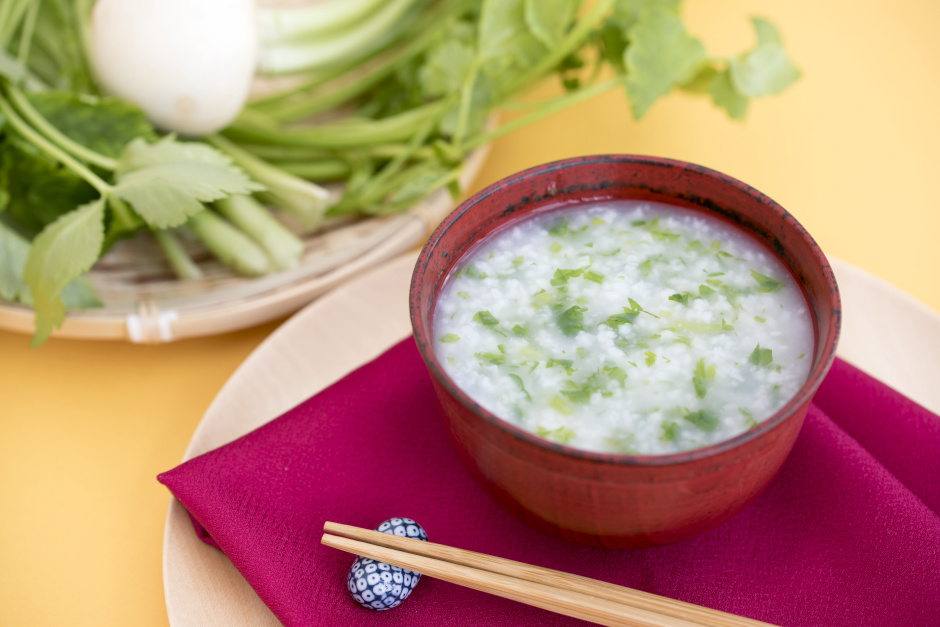
We took this question to Hiroko Okubo of The Washoku Association of Japan and also asked how the Jinjitsu no Sekku came to be.
“Jinjitsu no Sekku” is a fusion of Japanese and Chinese culture
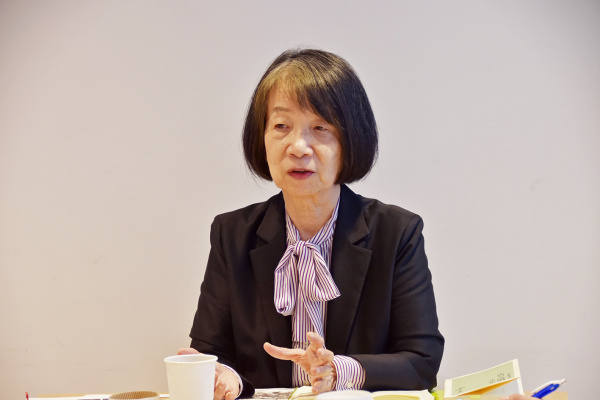
It is said that because celebrating New Year’s became common practice on January 1, a day that holds a special meaning for Japanese people, the Jinjitsu no Sekku was set on January 7, and not on a Ju-nichi date. However, Okubo says that “there is more to this” and gave us an explanation.
It has been said that the Jinjitsu no Sekku is based on a Chinese custom that conducted divinations for eight days from New Year’s Day, with a day each assigned to “chickens, dogs, sheep, boar, cows, horses, humans and rice.” In “Jingchu-suishiji” text, which documents the manners and customs of the Jingchu region in south-central China during the sixth century, there is a passage stating, “The seventh day of the New Year is human day, and broth containing seven green herbs is made.” This passage is about the superstition claiming that eating porridge (soup) containing seven types of young leaves on human day will ensure a sickness-free year.
Apart from this Chinese custom, there was also a tradition to hold banquets at the Imperial Court on January 7 called Nanuka no Sechie. A sechie was a court banquet held at pivotal days of the year. The five major banquets are the January 1st Ganjitsu no Sechie (New Year’s Banquet), the Nanuka no Sechie (Seventh Day Banquet) for the Aouma no Sechie (Banquet of the White Horse) on the 7th, Toka no Sechie (Banquet of the Toka Dance) on the 16th, the May 5th Tango no Sechie (Sweet Flag Festival), and the November Toyonoakarai no Sechie (Flushed Faces Banquet). The Nanuka no Sechie is said to have started with a banquet spanning a few days from January 7 during the Nara period (710–794). The official event of the Nanuka no Sechie at the Imperial Court became the Aouma no Sechie. This is noted in the Chinese Book of Rites, saying that viewing seven white horses at the beginning of the year will do away with malicious forces for that year.
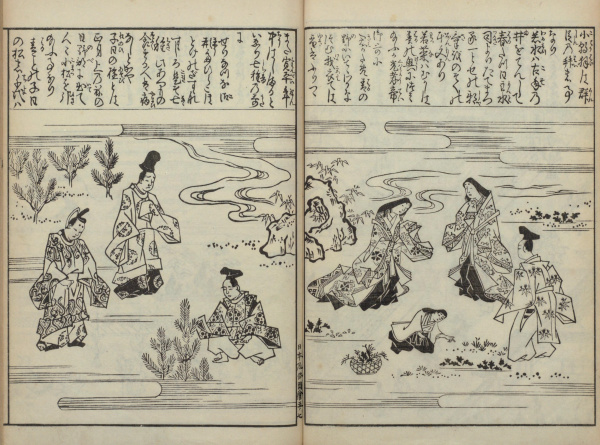
At the same time, picking young leaves was a custom during this season in Japan, ever since the Heian period (794–1185). In the Ogura Hyakunin Isshu (a collection of 100 poems by 100 poets) there is a poem said to be written by Emperor Koukou when he was a prince which says, “It is for your sake / That I walk the fields in spring, / Gathering green herbs”. Also, the Fuso Ryakuki (A Brief History of Japan), which is a history document created in the late Heian period, has a passage that mentions picking young leaves: “Emperor Uda held an outdoor banquet on the sixth day of the intercalary New Year in 896.”
This was originally an Imperial Court event which offered green herbs Wakana wo Kuuzu (offering of green herbs) held on the first day of the rat of the New Year (the day of the rat according to the oriental zodiac). However, the date of the event was eventually fixed on January 7, and Wakana wo Kuuzu became popular among aristocrats during the mid-Heian period, which is documented in Makura no Soshi (The Pillow Book) as well.
In this way, the Chinese custom of eating broth and the Japanese custom of picking green herbs both have the meaning of “taking the life force of young leaves, which have broken through the snow accumulated during the winter, and putting it into one’s body to ward off malicious forces.” These shared attributes fused together culturally to become a regular event in the Imperial Court.
Event food for the Jinjitsu no Sekku “Nanakusa-gayu”
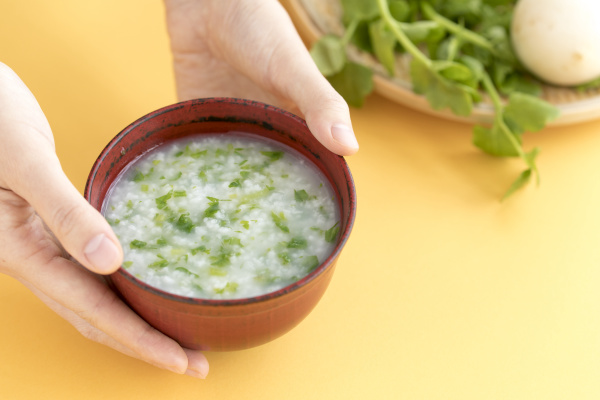
Even people not familiar with the phrase “Jinjitsu no Sekku” probably know “nanakusa-gayu” when the date January 7 comes to mind. However, the aforementioned customs state that soup-like broth was taken in China, and young leaves picked in Japan. So then, why did the nanakusa-gayu become an event food for the Jinjitsu no Sekku? The answer lies in how the Jinjitsu no Sekku, which was an event held at the Imperial Court, became popular among the common people during the Edo period (1603–1868).
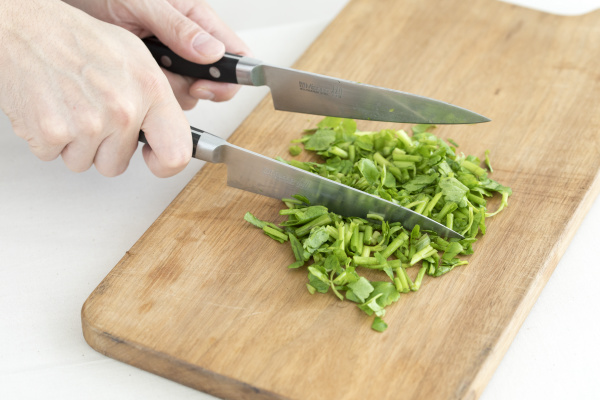
“Although it is a common practice to eat okayu (rice porridge) when we are not feeling well, porridge made from cold rice was a common dish during the Edo period. It was only natural for people to take care of their fatigued digestive system with rice porridge containing seasonal young herbs, after New Year’s festivities.” says Okubo.
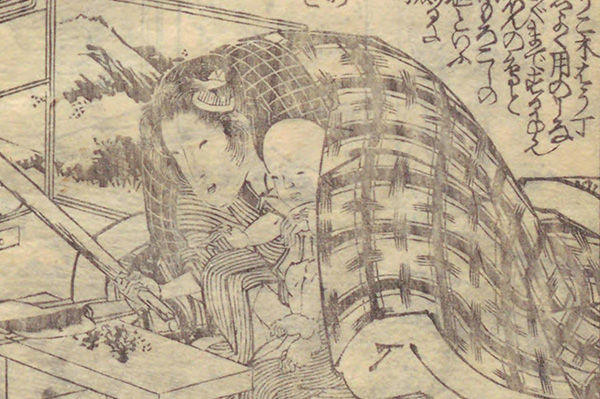
In this way, nanakusa-gayu established itself as an event food for the Jinjitsu no Sekku, and the process of cooking it gradually took a ritualistic turn.
“During the middle to late Edo period, preparation became a ritualistic event in which the breadwinner of the family would dress formally and prepare seven types of green herbs and seven cooking utensils such as knives and cutting boards before singing/chanting a song rhythmically while cutting the herbs in time.”
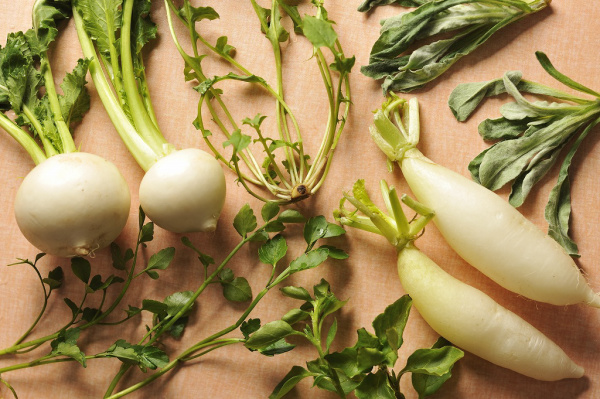
Although the song differs with each region, lyrics such as “Nanakusa nazuna / Todo no toriga / Nihon no tochi ni / Wataranu saki ni…*” (Seven herbs, Shepard’s purse, before birds from China fly over Japan) have spread throughout the country.
*The song continues with “koushitocho (to four stars), nazuna nanakusa hayashite hototo (cutting shepherd’s purse, seven leaves), sutotonton (cutting sounds), and many other variations.
It is not only the lyrics that differ in each region. In modern times, herbs used to make nanakusa-gayu are said to be seri (dropwort), nazuna (shepherd’s purse), gogyō (cudweed), hakobera (chickweed), hotokenoza (nipplewort), suzuna (turnip) and suzushiro (radish). However, it is said that porridge was made with only one to two herbs in Edo, and other regions would purchase shepherd’s purse from shepherd’s purse sellers or include Japanese mustard spinach or Japanese radish.
Each region has its own flair when it comes to porridge ingredients—the Tohoku region uses hondawara (a type of seaweed) or kushigaki (a type of persimmon), and Hiroshima and Kumamoto Prefectures have a tradition of including mochi (rice cakes) in their nanakusa-gayu.
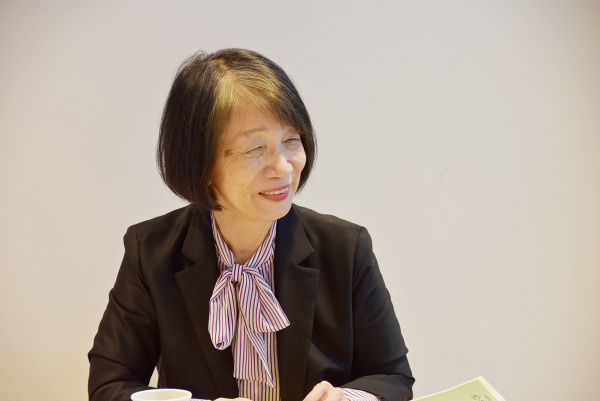
In closing, Okubo talked about one of the young herbs used for nanakusa-gayu. “The herb gogyō is also called haha-kogusa, and the Kanji characters are the characters for ‘mother and child herb.’ Isn’t it wonderful how a mother and child herb is used for a New Year’s event that does away with malicious forces for the child and prays for good health?”
How about preparing a pot of nanakusa-gayu and praying for the health of your friends and family on the January 7 Jinjitsu no Sekku?

